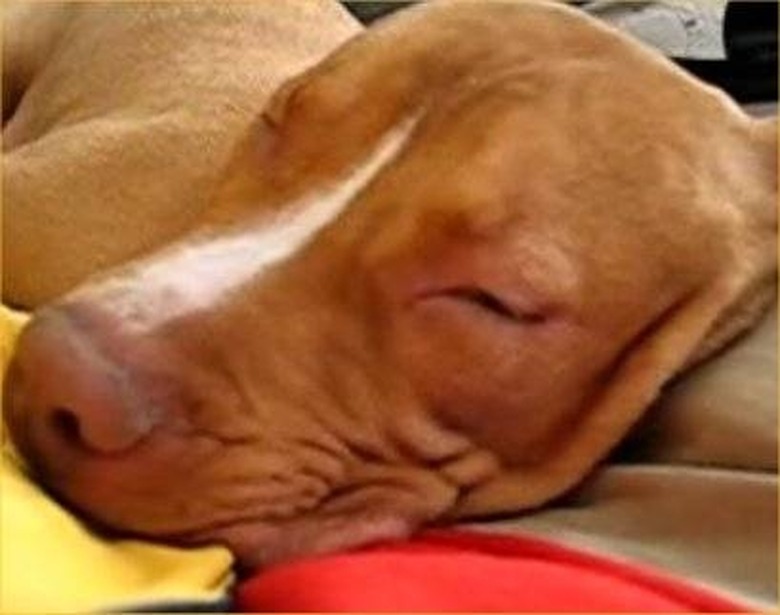How To Soundproof An Area For Dogs
Things Needed
-
Carpet remnants, blankets, or panels for the walls
-
Carpet for the floor
-
Staple gun
-
Drapes for the windows
-
Scissors
-
Weatherstripping
-
Coarse acoustic spray texture for the ceiling
-
Protective mask
-
Floor cloth
Warning
Keep in mind that spraying acoustic spray texture to a ceiling is a messy business. Lay a drop cloth down, as well as wear a protective mask, when spraying. This will keep the paint fumes out of your nose, and keep any extra "popcorn" pieces from staining your carpet. Once the paint has dried, however, there is no danger to you or your dogs.
Tip
When it comes to reducing acoustics, the exact placement of your materials, whether they are panels or carpet remnants, is not a concern. Placement patterns do not affect sound waves, and just the presence of a panel wherever it may be will help reduce sound.
Soundproofing an area for dogs, especially if you have more than one, can not only give you some peace and quiet, it can make you popular with your neighbors. If you have just one dog, a soundproof room can become an oasis for them. Whether you are building a room from scratch or retro-fitting a room to make it soundproof, the key to quiet is in the materials you select. The heavier the material, the less chance there is of sound escaping. Make sure you cover your bases, which means taking into account the wall, ceiling, floor, and even doorways and windows.
Step 1
Use a staple gun to adhere remnant carpet pieces or heavy blankets to your walls. If your budget allows, purchase manufactured panels specially designed for soundproofing. A 24 x 48 inch panel that is 4 inches thick sells for $60. Cover your walls as completely as possible, since more coverage equates to more silence.
Step 2
Lay a wall-to-wall carpet on the floor. Save money by buying carpet remnants. The carpet does not need to be secured as long as it is covering the entire floor area. An outdoor carpet that is thin but made of a material that is rough on the surface is preferable. Not only is this material easy to clean with a simple hose, the dogs will not catch their nails on the fibers and pull them. Additionally, rough surfaces absorb sound more than smooth surfaces that allow sound waves to travel.
Step 3
Apply adhesive weather strips to the threshold of your door. If cost is not a concern, a solid material door is more apt to minimize sound than one made out of a composite material.
Step 4
Minimize noise that travels through windows by applying more weather stripping to the bottom of the window, as well as by hanging heavy drapes or lighter drapes with a liner sewn in. Keep drape bottoms out of your dog's reach by trimming them to size with your scissors so they rest comfortably against the window sill.
Step 5
Apply a coarse acoustic spray texture to the ceiling. This will give it that "popcorn ceiling" appearance, and provides the textured surface that is sound absorbing. Simply point the bottle nozzle toward the ceiling and spray in long, even strokes. Calculate the area of your ceiling and read the spray can directions carefully to determine how many spray cans you will need. The spray is not hazardous to dogs. A can of coarse acoustic spray sells for less than $20.
Always check with your veterinarian before changing your pet's diet, medication, or physical activity routines. This information is not a substitute for a vet's opinion.
